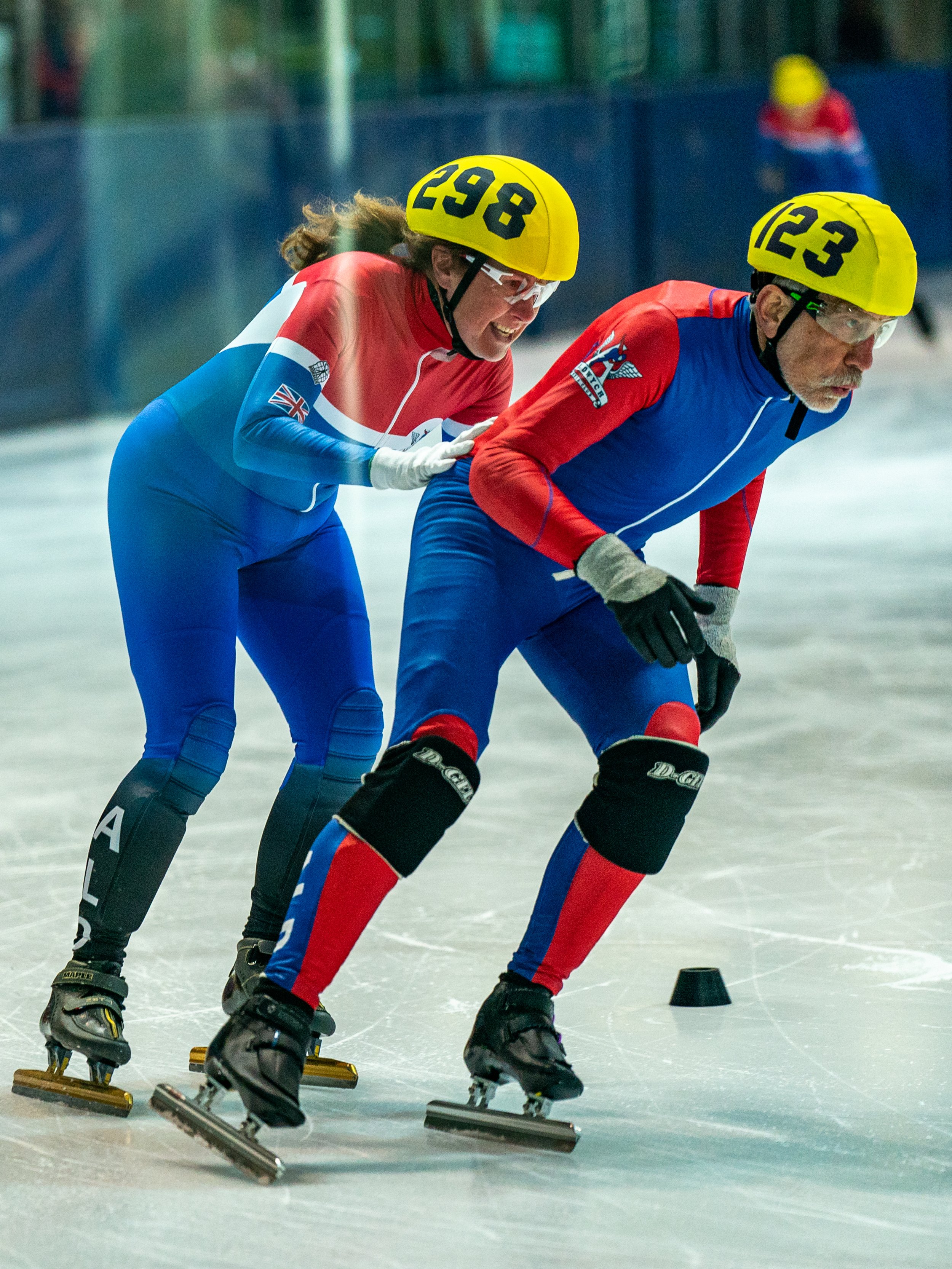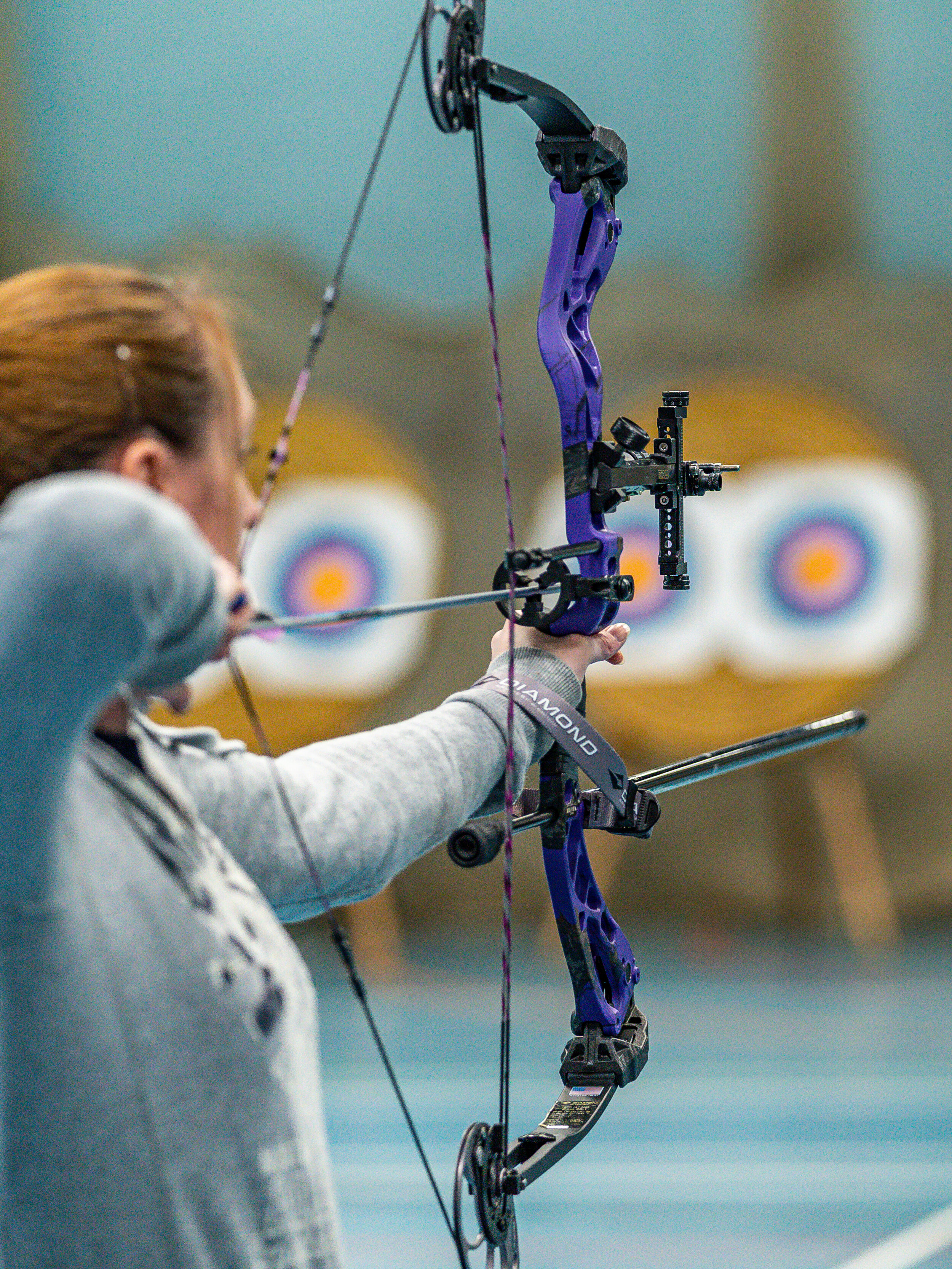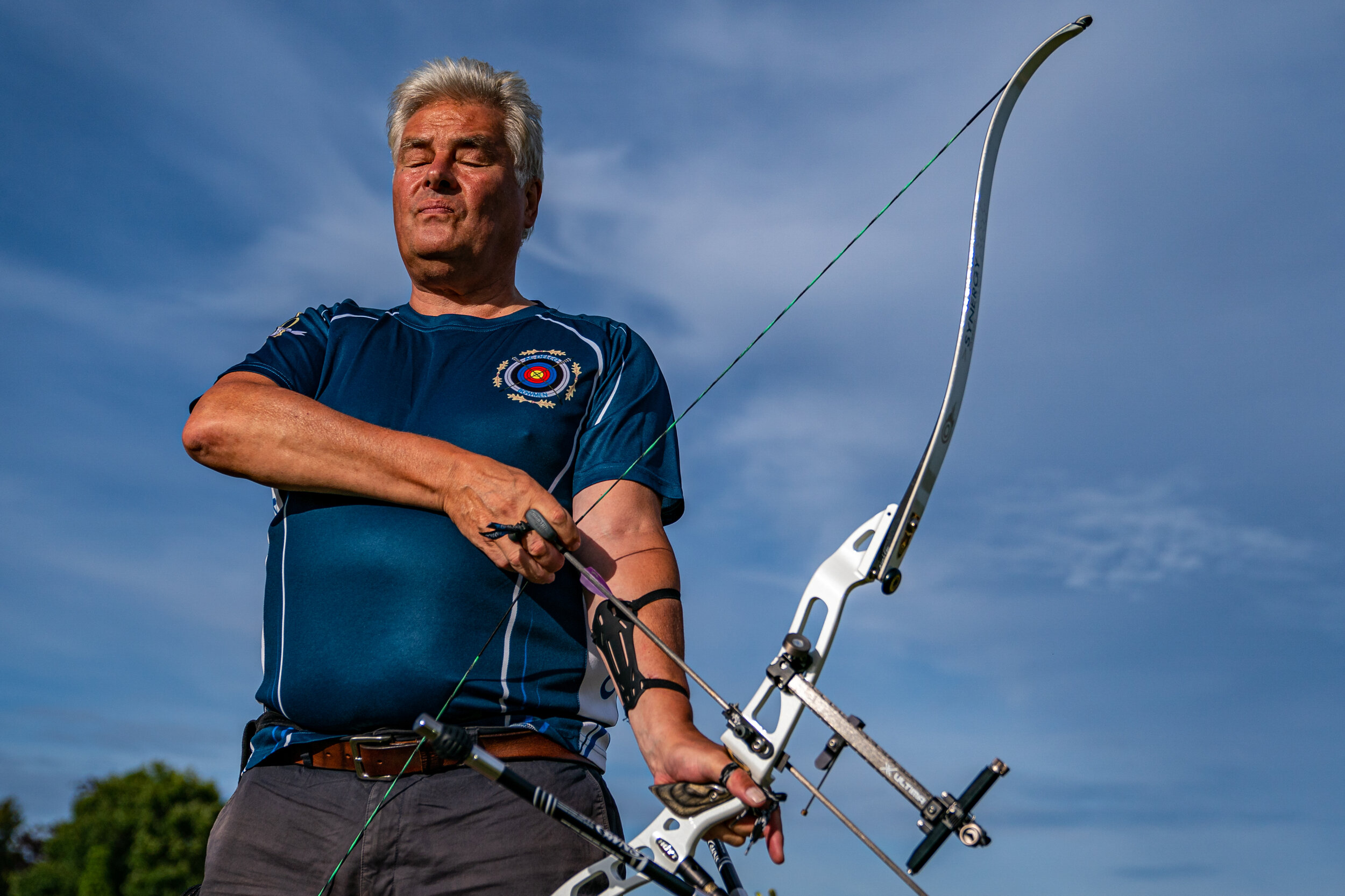My experience of speed skating comes from photographing an Open Competition at Aldwych Speed Club in Guildford in April 2023. I found many of the same issues arose as I had experienced when photographing track cycling and ice hockey, so you might want to read those blogs too.
(Sony a9II; 70-200mm at 200mm; f/2.8; 1/1000th sec; ISO 2500)
The first issue to address when arriving at any new venue is to establish the best location – or locations – from which to photograph. This should take into account (a) the view you are going to get of the athletes, (b) any distractions in the background (such as the advertisements in the photo above), and (c) any other constraints which, in this case, included the challenge of shooting through the plexiglass around the rink.
I was shown to the area where ice hockey players sit waiting to come onto the ice, which was ideal – no glass obscuring the view, and an excellent position to capture the skaters coming off the corner. Moreover, the issue of distracting advertisements around the rink was largely resolved by the plain dark blue padded mats that were placed around most of the rink to soften the blow if a skater were to fall and crash into the side.
(Sony a9II; 70-200mm at 157mm; f/2.8; 1/1000th sec; ISO 1600)
I stayed in this position for most of the shoot, because it had so many advantages, but I did try other positions, such as shooting from the end, straight down the rink. This was good when the skaters were coming directly towards me but, if I ever shot obliquely through the plexiglass, there was a risk of reflections in the glass – see the vertical white line in the photo above. Moreover, I believe the glass did have an effect on the sharpness of the photos.
(Sony a9II; 70-200mm at 200mm; f/2.8; 1/1000th sec; ISO 3200)
I was using a Sony a9II camera and, although I did have a 24-70mm f.2.8 lens and a 200-600mm f/5.6-6.3 lens with me, I used my 70-200mm f/2.8 lens almost all the time. From where I was shooting, half way down the rink, it was a perfect spread of focal lengths.
I set out the ‘standard’ camera settings in my blog Getting into Sport and Music Photography. In summary, I normally set the camera to Manual and:
· Open the lens wide open to make the depth of field as shallow as possible.
· Select a shutter speed at an appropriate level to freeze the action (in this case, around about 1/1000th sec).
· Set the ISO level to auto, within min/max parameters of 100 and about 3200 respectively.
(Sony a9II; 70-200mm at 200mm; f/2.8; 1/1000th sec; ISO 3200)
Other settings include:
· Metering: normally matrix.
· Autofocus mode: AF-C with lock-on tracking.
· Drive mode: continuous high.
· File type: RAW in one slot and JPG in the other, for resilience.
· White balance: auto – and I’ll sort any problems in post processing.
(Sony a9II; 70-200mm at 200mm; f/2.8; 1/1000th sec; ISO 3200)
The purpose of making the depth of field as shallow as possible is to produce separation between the main subject and the background, as in the photo above.
As mentioned, the fast shutter speed freezes the action and gives a good, sharp image. But, of course, that may not be the effect that you are after. As the name suggests, this type of skating is all about speed, and the character of the sport can be more effectively conveyed by blurring the background by panning the camera with a slower shutter speed – see below.
(Sony a9II; 70-200mm at 200mm; f/6.3; 1/50th sec; ISO 500)
There are further examples of panning images in my blog on Motorsports.
Normally I advocate getting as low as possible when shooting sports because that provides the best perspective and also makes the athletes look more dramatic and heroic. In the case of speed skating, however, I found that getting down low meant that the top of the blue mats was distractingly in the picture, whereas standing up meant that the mats were ‘whole’ and the background was therefore much cleaner, as in the images above and below.
Although the basic premise of the sport is skating around an oval course as quickly as possible, each race has a different story to tell. So, while it’s relatively easy to get stock shots of individual skaters as in the image above (although panning isn’t so easy!), it’s more interesting to show the skaters in competition with each other, showing who is in the lead and who is trailing behind, as below.
(Sony a9II; 70-200mm at 200mm; f/2.8; 1/1000th sec; ISO 1600)
While the main excitement for me was shooting the races, where I was standing also provided an excellent view of the start of most of the races, which took place right in front of me. This presented great opportunities to take character shots of the skaters at close quarters – see below. The camera settings, while primarily chosen for the race itself, make the subject stand out really well from the background, being so close.
(Sony a9II; 70-200mm at 200mm; f/2.8; 1/1000th sec; ISO 4000)
One final word of advice, which may sound obvious! I visited the rink in Guildford on a lovely, warm day, but I was grateful that I had thought to wear a winter coat as I stood next to the ice rink for over 3 hours. I had also taken the precaution to put some gloves in my camera case, and I was very glad I did!
(Sony a9II; 70-200mm at 200mm; f/2.8; 1/1000th sec; ISO 2500)
All in all, photographing speed skating was great fun, and the results are colourful and dramatic. I would highly recommend it if you get the opportunity!
With special thanks to Aldwych Speed Club.
If you have enjoyed this blog or if you have any questions/comments, please leave a message in the comments box below.





































